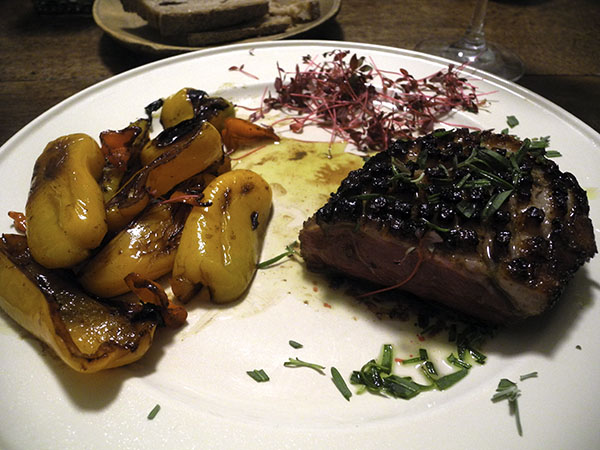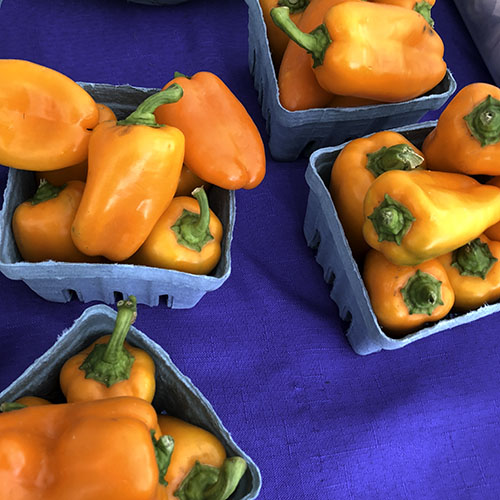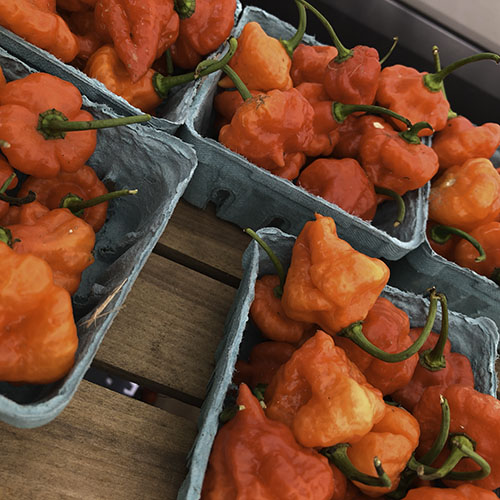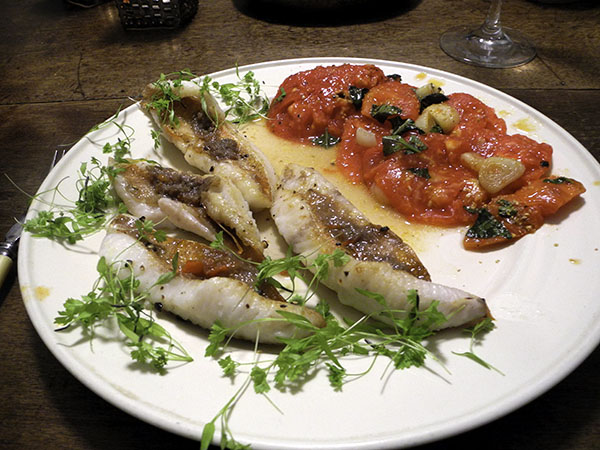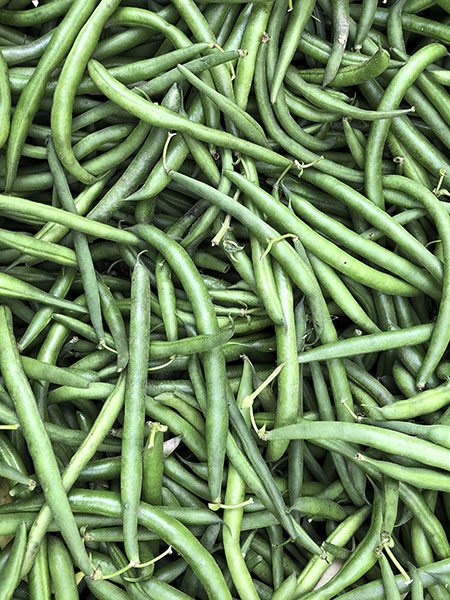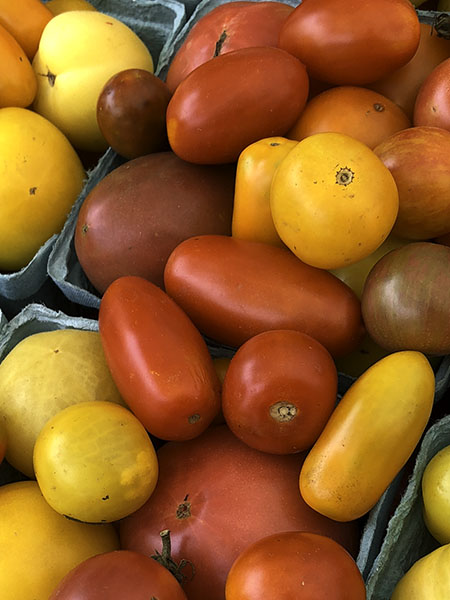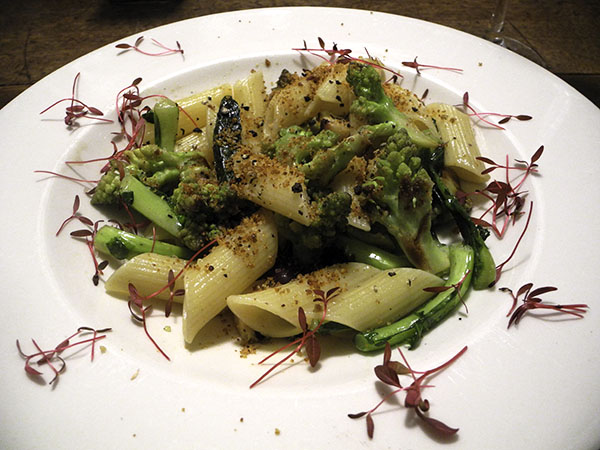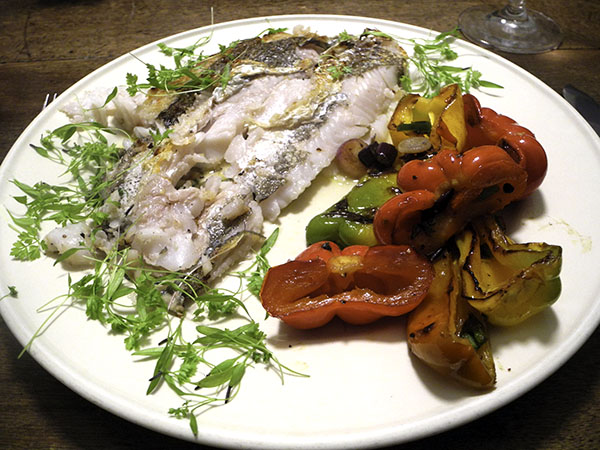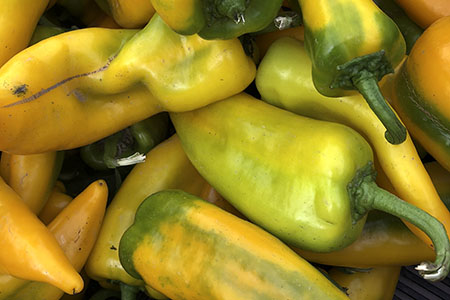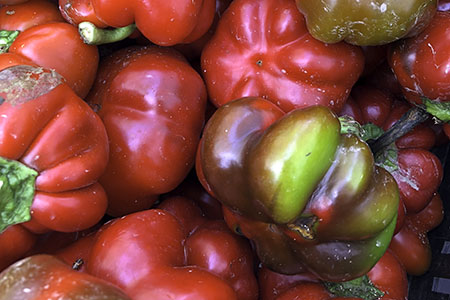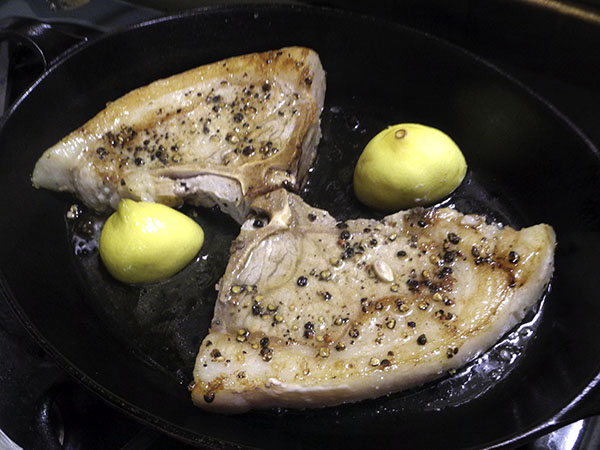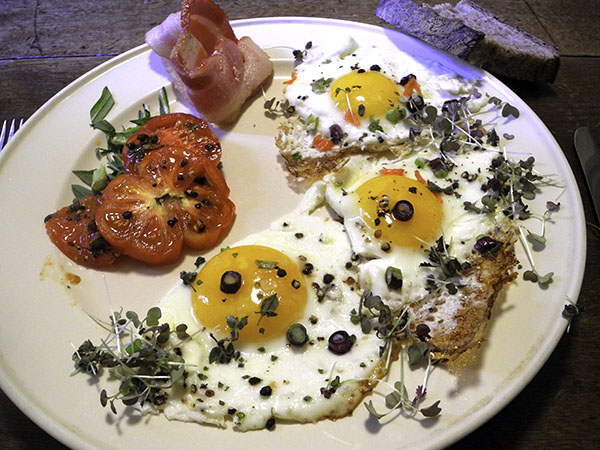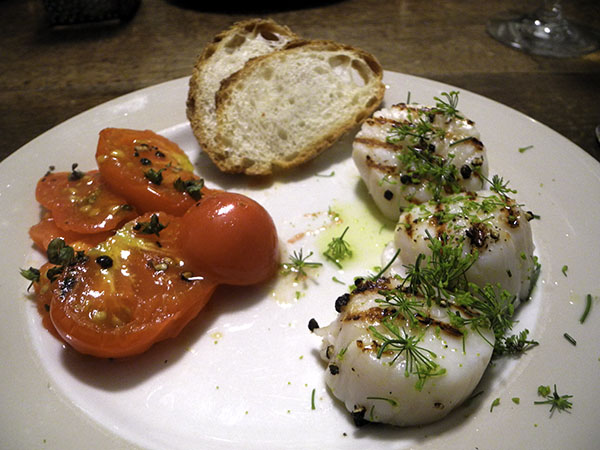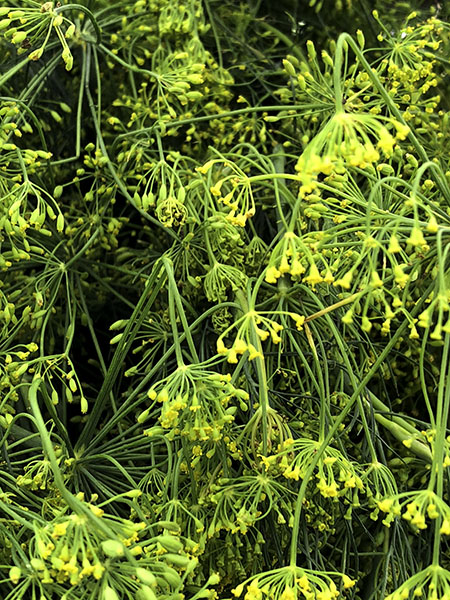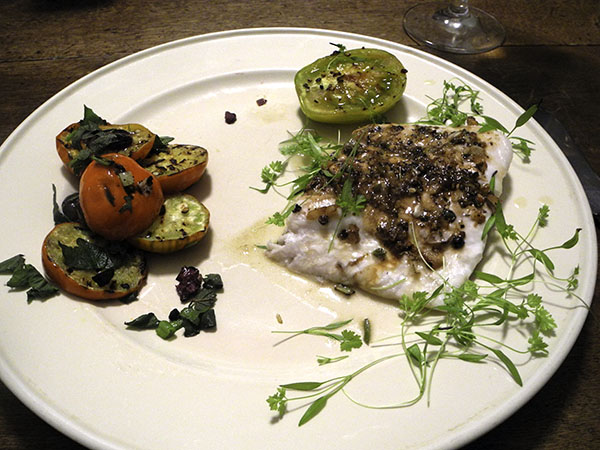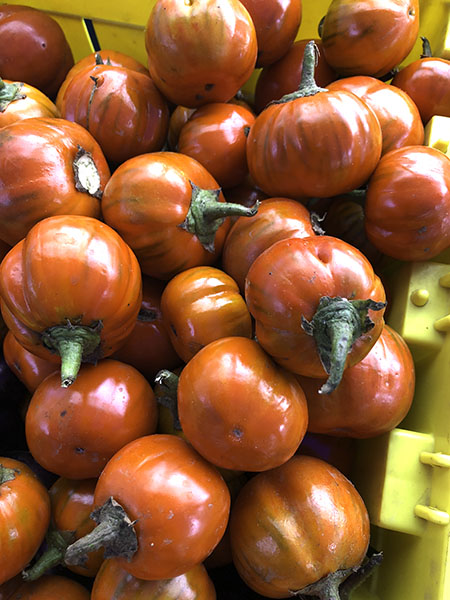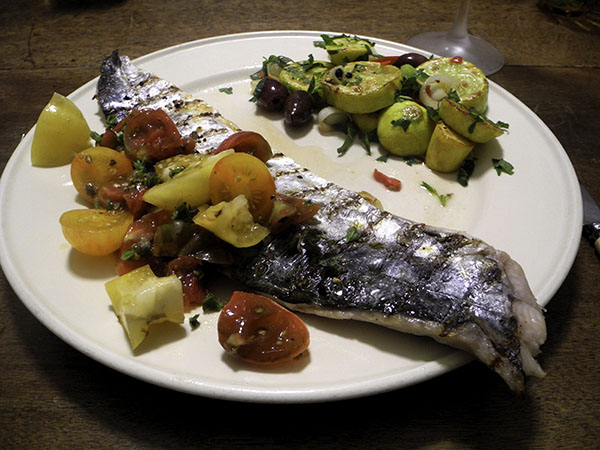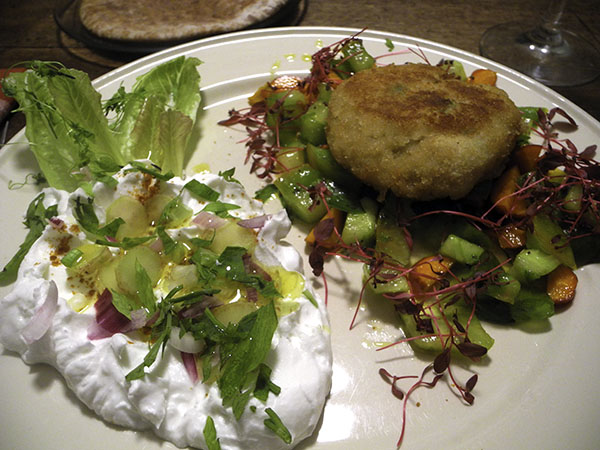
I knew there would be crab cakes, but everything else was pretty much thrown together minutes before we sat down.
It was a greenmarket day, and therefore a fish day at our place, but I didn’t really need anything other than seafood, and I remembered that I had some really terrific frozen crab cakes that were made at home by Delores Karlin, the wife of the fisherman, Phil, whose stand would be there that Monday. I resolved to try to buy more the next week.
Early in the evening I decided that the labneh that I had also picked up in Union Square on an earlier market day, would make a great base for a sympathetic savory accompaniment to the crab cakes I would be serving on a bed of tomato salsa [that is, a mostly tomato salsa].
I tweeted that evening that the fact our “more or less middle eastern dinner” included crab narrowed down its cultural antecedents, since observant jews and at least most Shia Muslims avoid shellfish, or at least crab. But I think it’s safe to say, at the very least, this dinner might not look too out of place on some Lebanese or Greek tables.
Both labneh topping and the salsa ‘bottoming’ each ended up with a few unorthodox ingredients.
- two crab cakes from PE & DD Seafood (crab, egg, flour, red & green peppers, garlic, salt, pepper, breadcrumbs, mayonnaise, milk, celery, and parsley), defrosted earlier in the day, heated with a drizzle of olive oil inside a heavy oval enameled cast iron pan, 3 to 4 minutes to each side, served on a salsa composed of one large chopped green heirloom tomato from Eckerton Hill Farm, some small raw chopped sweet Badger Flame beets from Norwich Meadows Farm (they’re the bits that appear to be carrots in the picture), a little finely-chopped aji dulce pepper, olive oil, sea salt, freshly-ground black pepper, crab cakes and salsa garnished with micro red amaranth
- a serving of plain water buffalo milk labneh from Riverine Ranch, leaving a shallow depression to receive a bit of a very good Sicilian olive oil, from Agricento, Azienda Agricola Mandranova (made exclusively with Nocellara olives), a bit of a dry seasoning called L’ekama from Ron & Leetal Arazi’s New York Shuk, finely sliced segment of red scallion from Berried Treasures Farm, the chopped stem of a baby purple romaine lettuce stem from from Echo Creek Farm, found in the Saturday Chelsea Farmers Market, garnished with chopped lovage from Keith’s Farm and arranged with the last leaves from that same lettuce stem, which were dressed with Maldon salt, freshly-ground black pepper, drops of juice from a Whole Foods Market lemon, and a bit of the same Sicilian olive oil
- Damascus Bakery flax and chia pita bread from the Chelsea Foragers Market, heated in the cast iron pan used for the crab cakes
- the wine was a Washington (Columbia Valley) white, Dave Harvey Columbia Valley Sauvignon Blanc 2017, from Naked Wines
- the music was the album, ‘Alexander Goehr: Symmetry Disorders Reach’
